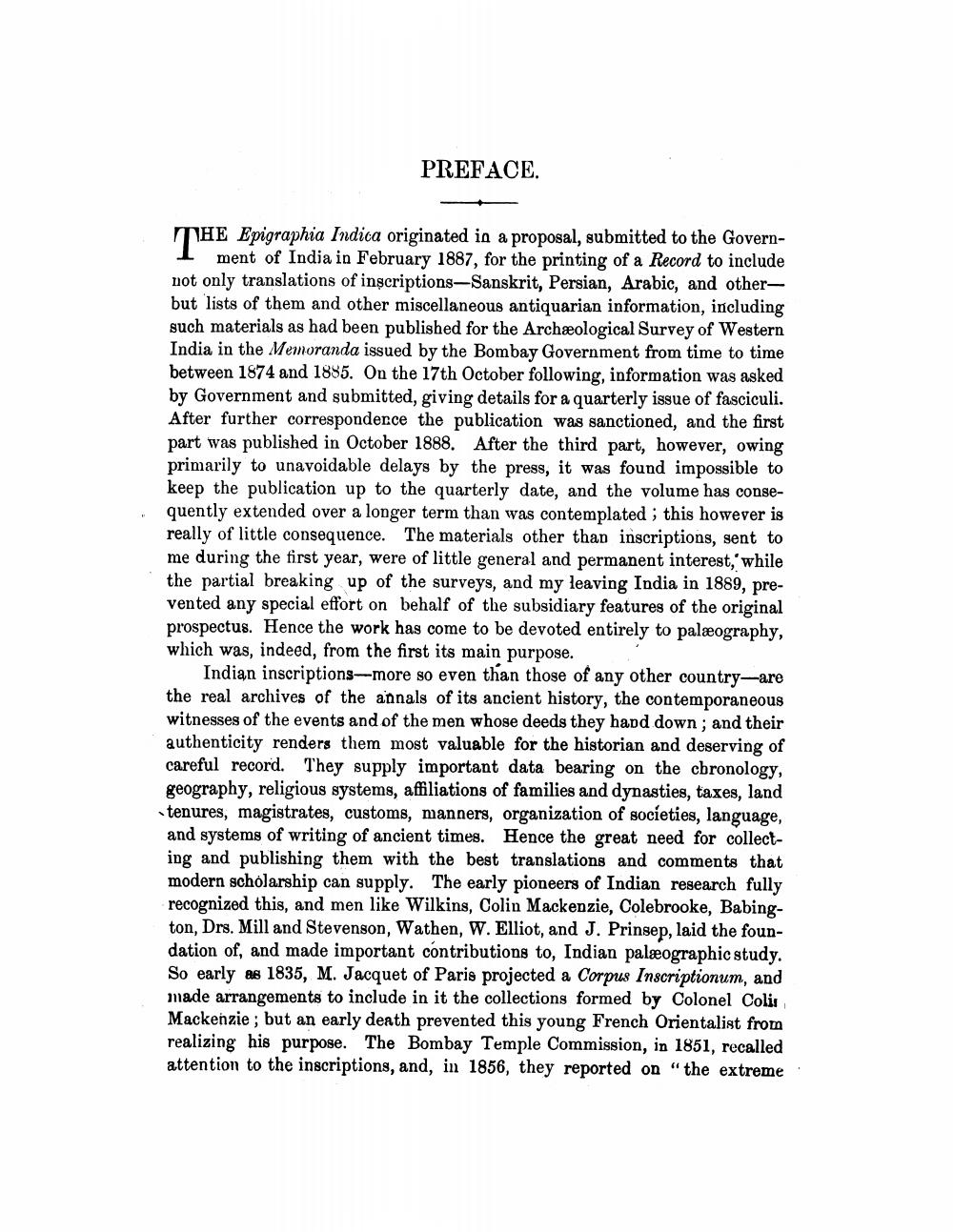Book Title: Epigraphia Indica Vol 01 Author(s): Jas Burgess Publisher: Archaeological Survey of India View full book textPage 6
________________ PREFACE. M HE Epigraphia Indica originated in a proposal, submitted to the Govern 1 ment of India in February 1887, for the printing of a Record to include not only translations of inscriptions-Sanskrit, Persian, Arabic, and otherbut lists of them and other miscellaneous antiquarian information, including such materials as had been published for the Archæological Survey of Western India in the Memoranda issued by the Bombay Government from time to time between 1874 and 1885. On the 17th October following, information was asked by Government and submitted, giving details for a quarterly issue of fasciculi. After further correspondence the publication was sanctioned, and the first part was published in October 1888. After the third part, however, owing primarily to unavoidable delays by the press, it was found impossible to keep the publication up to the quarterly date, and the volume has consequently extended over a longer term than was contemplated ; this however is really of little consequence. The materials other than inscriptions, sent to me during the first year, were of little general and permanent interest,' while the partial breaking up of the surveys, and my leaving India in 1889, prevented any special effort on behalf of the subsidiary features of the original prospectus. Hence the work has come to be devoted entirely to palæography, which was, indeed, from the first its main purpose. ' Indian inscriptions—more so even than those of any other country-are the real archives of the annals of its ancient history, the contemporaneous witnesses of the events and of the men whose deeds they hapd down; and their authenticity renders them most valuable for the historian and deserving of careful record. They supply important data bearing on the chronology, geography, religious systems, affiliations of families and dynasties, taxes, land tenures, magistrates, customs, manners, organization of societies, language, and systems of writing of ancient times. Hence the great need for collecting and publishing them with the best translations and comments that modern scholarship can supply. The early pioneers of Indian research fully recognized this, and men like Wilkins, Colin Mackenzie, Colebrooke, Babington, Drs. Mill and Stevenson, Wathen, W. Elliot, and J. Prinsep, laid the foundation of, and made important contributions to, Indian palæographic study. So early as 1835, M. Jacquet of Paris projected a Corpus Inscriptionum, and made arrangements to include in it the collections formed by Colonel Colis Mackenzie ; but an early death prevented this young French Orientalist from realizing his purpose. The Bombay Temple Commission, in 1851, recalled attention to the inscriptions, and, in 1856, they reported on "the extremePage Navigation
1 ... 4 5 6 7 8 9 10 11 12 13 14 15 16 17 18 19 20 21 22 23 24 25 26 27 28 29 30 31 32 33 34 35 36 37 38 39 40 41 42 43 44 45 46 47 48 49 50 51 52 53 54 55 56 57 58 59 60 61 62 ... 528
